
IO-HOO-0418/4
(04.2021)
Kitchen extractor hood / okap nadkuchenny /
kuchyňského odsavače / kuchynského odsávača
/ Hotă de bucătărie / tűzhely feletti páraelszívó /
кухненски аспиратор
OKC6111MI / OKC5111MW /
OKC6111MW / SKM 61 AW /
OKC5111MI
OPERATING INSTRUCTIONS EN
INSTRUKCJA OBSŁUGI PL
NÁVOD K OBSLUZE CS
NÁVOD NA OBSLUHU SK
INSTRUCŢIUNE DE DESERVIRE RO
HASZNÁLATI UTASÍTÁS HU
ИНСТРУКЦИЯ ЗА ОБСЛУЖВАНЕ BG


- 3 -
NOTES ON SAFETY 7
UNPACKING 10
DISPOSAL OF OLD APPLIANCE 10
OPERATION 11
KITCHEN HOOD CONTROLS 11
OTHER IMPORTANT INFORMATION CONCERNING THE OPERATION OF THE HOOD 12
CLEANING AND MAINTENANCE 13
MAINTENANCE 13
GREASE FILTER 13
ACTIVATED CHARCOAL FILTER 13
LIGHT 13
WARRANTY AND AFTER SALES SERVICE 14
WARRANTY 14
WSKAZÓWKI DOTYCZĄCE BEZPIECZEŃSTWA 16
ROZPAKOWANIE 20
USUWANIE ZUŻYTYCH URZĄ DZEŃ 20
OBSŁUGA 21
STEROWANIE OKAPEM 21
INNE WAŻNE INFORMACJE DOTYCZĄCE OBSŁUGI OKAPU 22
CZYSZCZENIE I KONSERWACJA 23
KONSERWACJA 23
FILTR PRZECIWTŁUSZCZOWY 23
FILTR WĘGLOWY 23
OŚWIETLENIE 23
GWARANCJA, OBSŁUGA POSPRZEDAŻOWA 24
GWARANCJA 24
EN- Table of contents
PL- Spis treści
BEZPEČNOSTNÍ POKYNY 26
VYBALENÍ 29
LIKVIDACE OPOTŘEBOVANÝCH ZAŘÍZENÍ 29
OBSLUHA 30
OVLÁDÁNÍ ODSAVAČE 30
JINÉ DŮLEŽITÉ INFORMACE O OBSLUZE ODSAVAČE 31
ČIŠTĚNÍ A ÚDRŽBA 32
ÚDRŽBA 32
PROTITUKOVÝ FILTR 32
UHLÍKOVÝ FILTR 32
OSVĚTLENÍ 32
ZÁRUKA, POPRODEJNÍ SERVIS 33
ZÁRUKA 33
CS- Obsah

- 4 -
BEZPEČNOSTNÉ POKYNY POUŽÍVANIA 35
ROZBALENIE 39
LIKVIDÁCIA ZARIADENÍ 39
OBSLUHA 40
OVLÁDANIE ODSÁVAČA 40
INÉ DÔLEŽITÉ INFORMÁCIE TÝKAJÚCE SA POUŽÍVANIA ODSÁVAČA 41
ČISTENIE A ÚDRŽBA 42
KONZERVÁCIA 42
PROTITUKOVÝ FILTER 42
UHLÍKOVÝ FILTER 42
OSVETLENIE 42
ZÁRUKA, POPREDAJNÝ SERVIS 43
ZÁRUKA 43
INDICAȚII PRIVIND SIGURANȚA 45
DESPACHETARE 49
ÎNDEPĂRTAREA DISPOZITIVELOR UZATE 49
OPERARE 50
CONTROL HOTĂ 50
ALTE INFORMATII IMPORTANTE PENTRU OPERAREA HOTEI 51
CURĂŢAREA ŞI ÎNTREŢINEREA 52
ÎNTREŢINERE 52
FILTRUL ÎMPOTRIVA GRĂSIMILOR 52
FILTRUL DE CARBON 52
SISTEM DE ILUMINARE 52
GARANŢIE, SERVICII POSTVÂNZARE 53
GARANŢIA 53
BIZTONSÁGI UTASÍTÁSOK 55
KICSOMAGOLÁS 59
A HASZNÁLT KÉSZÜLÉKEK ELTÁVOLÍTÁSA 59
HASZNÁLAT 60
PÁRAELSZÍVÓ VEZÉRLÉSE 60
A PÁRAELSZÍVÓ MŰKÖDÉSÉVEL KAPCSOLATOS EGYÉB FONTOS INFORMÁCIÓK 61
TISZTÍTÁS ÉS KARBANTARTÁS 62
KARBANTARTÁS 62
ZSÍRSZŰRŐ 62
SZÉNSZŰRŐ 62
VILÁGÍTÁS 62
GARANCIA ÉS VÁSÁRLÁS UTÁNI SZERVIZ 63
GARANCIA 63
SK- Obsah
RO - Cuprins
HU - Tartalomjegyzék

- 5 -
BG - Съдържание
ПРЕПОРЪКИ ОТНОСНО БЕЗОПАСНОСТТА 65
РАЗОПАКОВАНЕ 69
ОБЕЗВРЕЖДАНЕ НА ИЗНОСЕНИ УРЕДИ 69
ОБСЛУЖВАНЕ 70
УПРАВЛЕНИЕ НА АБСОРБАТОРА 70
ДРУГИ ВАЖНИ ИНФОРМАЦИИ ЗА ОБСЛУЖВАНЕТО НА АБСОРБАТОРА 71
ПОЧИСТВАНЕ И ПОДДРЪЖКА 72
ПОДДРЪЖКА 72
ФИЛТЪР ЗА МАЗНИНИ 72
ВЪГЛЕН ФИЛТЪР 72
ОСВЕТЛЕНИЕ 72
ГАРАНЦИЯ, СЛЕД ПРОДАЖБЕНО ОБСЛУЖВАНЕ 73
ГАРАНЦИЯ 73

- 6 -
Dear customer,
From now on, your daily housework will be easier
than ever before. Your appliance is excepon-
ally easy to use and extremely ecient. Aer reading
these Operang Instrucons, operang the appliance
will be easy.
Before being packaged and leaving the manufacturer,
the appliance was thoroughly checked with regard to
safety and funconality.
Before using the appliance, please carefully read
these Operang Instrucons. By following these
instrucons carefully you will be able to avoid any
problems in using the appliance. It is important to
keep these Operang Instrucons and store them in a
safe place so that they can be consulted at any me.
Follow these instrucons carefully in order to avoid
possible accidents.
Sincerely,

- 7 -
NOTES ON SAFETY
• Before using the appliance, please carefully read
this manual!
• The appliance is designed for household use only.
• The manufacturer reserves the right to introduce
changes, which do not aect operation of the ap-
pliance.
• The manufacturer shall not be liable for any dam-
age or re caused by the appliance resulting from
failure to follow instructions in this manual.
• Cooker hood is designed to remove cooking
odours. Do not use cooker hood for other pur-
poses.
• Connect the cooker hood operating in extraction
mode to a suitable ventilation duct (do NOT con-
nect the cooker to smoke or ue gas ducts, which
are in use). It requires installation of the air ex-
traction duct to the outside. The length of the
duct (usually a pipe of Ø 120 or 150 mm) should
not be longer than 4-5 m. An air extraction duct
is also required for telescopic and furniture hoods
in absorption mode.
• Cooker hood operating in air recirculation mode
requires the installation of an activated charcoal
lter. In this case, installing an extractor duct is
not required, however it is recommended to in-
stall an air guide vane (Mainly in chimney cooker
hoods).
• The cooker hood features independent lighting
and exhaust fan that can be operated at one of
several speeds.
• Depending on the type, the hood is designed to
be permanently attached to a vertical wall over
a gas or electric stove (chimney and universal
hoods); on the ceiling over a gas or electric stove
(island hoods); on the vertical built in furniture
over a gas or electric stove (telescopic and built-
in hoods). Before installing, make sure that the

- 8 -
wall/ceiling structure is strong enough to suspend
the hood. Some hoods are very heavy.
• For details of the installation distance above an
electric hob please refer to product technical
sheet If the installation instructions of the gas
cooker specify a greater distance, this must be
taken into account (Fig. 1).
• Do not leave an open ame under the hood.
When the pots are removed from the burner, set
the minimum ame. Always make sure that the
ame does not extend outside the pot, because it
causes unwanted loss of energy and a dangerous
concentration of heat.
• When cooking on fat, supervise the pans con-
stantly, because overheated fat can ignite.
• Unplug the appliance before any cleaning, replac-
ing the lter or repair work.
• Cooker hood grease lter should be cleaned at
least once a month, because the lter saturated
with fat is ammable.
• Ensure adequate ventilation (air ow) if other
equipment such as liquid fuel stoves or heaters
are operated in the room in addition the cooker
hood. When the cooker hood is simultaneously
operated with burning appliances requiring ade-
quate fresh air from the room to work properly,
their safe operation is possible if under pressure
around these appliances is a maximum of 0.004
mbar (this does not apply when the cooker hood
is used as an odour lter)
• Do not lean on the hood.
• The hood should be cleaned regularly both inside
and out (AT LEAST ONCE A MONTH, following the
indications concerning maintenance provided in
this manual)..Failure to adhere to the rules con-
cerning cleaning the hood and replacing lters
results in a re risk.
• If the power cord is damaged it should be re-
placed by a specialised service centre.
• Ensure that it is possible to disconnect the ap-

- 9 -
pliance from the mains by removing the plug or
switching o the bi-polar switch.
• This appliance is not intended for use by persons
(including children) with physical, mental or sen-
sory handicaps, or by persons inexperienced or
unfamiliar with the appliance, unless under su-
pervision or in accordance with the instructions
as communicated to them by persons responsible
for their safety.
• Particular attention should be paid not to allow
unaccompanied children to use the appliance.
• Make sure voltage indicated on the nameplate
corresponds to the local mains supply voltage.
• Before use, extend and straighten the power cord.
• Packaging materials (bags, polyethylene, poly-
styrene, etc.) should be kept away from children
during unpacking.
• Before connecting the hood to the mains power
supply always check that the power cord is prop-
erly installed and is not trapped by the appliance.
Do not connect the appliance to the mains until
assembly is complete.
• Do not operate your kitchen hood without the al-
uminium grease lters.
• It is strictly forbidden to cook dishes under on an
open ame (ambé) under your kitchen hood.
• Always strictly adhere to regulations issued by the
competent local authorities regarding the techni-
cal and safety requirements for fume extraction.
• Failing to tighten bolts and fasteners in accord-
ance with these instructions may endanger life
and health.
• Hanging kitchen hoods operate only in air circu-
lation / odour absorber mode
• WARNING! Failure to install the screws or xing
device in accordance with these instructions may
result in electrical hazards.

- 10 -
UNPACKING
During transportation, protective
packaging was used to protect the
appliance against any damage. Af-
ter unpacking, please dispose of all
elements of packaging in a way that
will not cause damage to the environ-
ment.
All materials used for packaging the
appliance are environmentally friendly; they are
100% recyclable and are marked with the appropri-
ate symbol.
Important! Packaging materials (bags, polyethyl-
ene, polystyrene, etc.) should be kept away from
children during unpacking.
DISPOSAL OF OLD APPLIANCE
In accordance with European Directive
2012/19/EU and local legislation re-
garding used electrical and electronic
goods, this appliance is marked with
the symbol of the crossed-out waste
container. This marking indicates that
the appliance must not be disposed of
together with other household waste
after it has been used.
The user is obliged to hand it over to waste collec-
tion centre collecting used electrical and electron-
ic goods. The collectors, including local collection
points, shops and local authority departments pro-
vide recycling schemes.
Proper handling of used electrical and electronic
goods helps avoid environmental and health haz-
ards resulting from the presence of dangerous com-
ponents and the inappropriate storage and process-
ing of such goods.

- 11 -
OPERATION
Kitchen hood controls
Control Panel is shown in Figure 4, for reference it is also shown below:
The control panel is equipped with two sliders:
Use the fan speed slider to adjust fan speed:
1- Low speed. Use this speed when cooking a little food with hardly any
fumes.
2- Medium speed. Use this speed when cooking multiple dishes at the
same time with moderate amount of fumes.
3- High speed. Use this speed when frying or grilling, with large
amount of fumes.
0- Set the slider in this setting to turn o the fan
Use lighting slider to turn lighting on (1) / o (0). The lighting oper-
ates independently of hood fan.

- 12 -
Other important information concerning the operation of
the hood
Operation in air circulation / odour lter mode. In this mode, the ltered
air returns to the room through the outlets. Install activated charcoal
lter in this setting. It is recommended to install the air guide (available
depending on the model, mainly in chimney cooker hoods).
Air extraction operation: When cooker hood operates in extraction mode,
air is discharged outside through an extraction duct. Remove activated
charcoal lter in this setting. The cooker hood is connected to the air
outlet opening using a rigid or exible extraction duct with a diameter of
150 or 120 mm, and the appropriate clamps, which must be purchased
at a hardware store. The appliance should be installed by a qualied
installer.
Fan speed: Lowest and medium fan speed is used in normal conditions
and less intense odours, while the highest speed is used only when cook-
ing odours are very intense, such as during frying or grilling.
Note (applies to universal hoods only): Due to the design of universal
hoods you need to manually change the mode of operation. See Figure
8 for instructions on how to change the mode.
Note (only applies to telescopic and in-built kitchen hoods): Furniture
and telescopic cooker hoods operating in air recirculation mode require
installation of the exhaust duct. The other end of the duct should be di-
rected to the room as it will discharge ltered air.
Note: Hanging kitchen hoods operate only in air circulation / odour ab-
sorber mode

- 13 -
CLEANING AND
MAINTENANCE
Maintenance
Regular maintenance and cleaning of the appliance will ensure trou-
ble-free operation of the cooker hood and extend its life. Especially make
sure that the grease lter and activated charcoal lter are replaced ac-
cording to manufacturer's recommendations.
• Do not use a soaked cloth, sponge, or water jet.
• Do not use solvents or alcohol, as they may tarnish lacquered sur-
faces.
• Do not use caustic substances, especially for cleaning stainless steel.
• Do not use a rough or abrasive cloth.
• It is recommend to use a damp cloth and a neutral detergent.
Note: After several washes in the dishwasher, the colour of the alumini-
um lter may change. The change of colour does not indicate improprie-
ties or the necessity to change it.
Grease lter
For normal hood operation, grease lter should be cleaned every month
in the dishwasher or by hand using a mild detergent or liquid soap.
Dismantling of grease lter is shown on Figure 5.
Acrylic lter is used in some models. This lter should be replaced at
least once every 2 months or more frequently if the appliance is used
intensively.
Activated charcoal lter
Charcoal lter is used only when the cooker hood is not connected to
the ventilation duct. Activated charcoal lter can absorb odours until
saturated. Charcoal lter is not suitable for washing or regeneration and
should be replaced at least once every 3-4 months or more frequently if
the appliance is used intensively.
Dismantling of charcoal lter is shown on Figure 6.
Light
Use incandescent / halogen / LED modules of the same specication as
those factory-installed in the appliance. See Figure 7 for details how to
replace lights. If there is no such gure in this manual, please contact
authorised service to replace the lighting module.

- 14 -
WARRANTY AND AFTER
SALES SERVICE
Warranty
Warranty service as stated on the warranty card. The manufacturer shall
not be held liable for any damage caused by improper use of the product.
Service
• The manufacturer recommends that all repairs and adjustments be
carried out by the Factory Service Technician or the Manufacturer’s
Authorized Service Point. For safety reasons, repairs should be re-
ferred to professionals.
• Repairs carried out by unqualied persons may seriously endanger
the appliance user.
• The minimum warranty period for the appliance oered by the man-
ufacturer, importer or authorized representative is given in the war-
ranty card.
• The warranty shall be void if you make any independent adaptations
or alterations, tamper with seals or other appliance safety devices
or its parts or interfere with the appliance contrary to operating in-
structions.
In the event of appliance malfunction, request assistance or repair.
If your appliance needs repair, please contact the service centre. Please
see warranty card for address and contact details of our service centre.
Before contacting us, please have ready the appliance serial number,
which can be found on the identication sticker: For your convenience,
please write it down below:
Manufacturer’s Declaration
The manufacturer hereby declares that this product meets the re-
quirements of the following European directives:
• Low Voltage Directive 2014/35/EC
• Electromagnetic Compatibility (EMC) Directive 2014/30/EC
• ErP Directive 2009/125/EC
• Directive RoHS 2011/65/EC
and has thus been marked with the symbol and been issued with
a declaration of compliance made available to market regulators.

- 15 -
Szanowny
Kliencie
Od dziś codzienne obowiązki staną się prostsze niż
kiedykolwiek. Urządzenie to połączenie wy-
jątkowej łatwości obsługi i doskonałej efektywności.
Po przeczytaniu instrukcji, obsługa nie będzie proble-
mem.
Sprzęt, który opuścił fabrykę był dokładnie sprawdzo-
ny przed zapakowaniem pod względem bezpieczeń-
stwa i funkcjonalności na stanowiskach kontrolnych.
Prosimy Państwa o uważną lekturę instrukcji obsłu-
gi przed uruchomieniem urządzenia. Przestrzeganie
zawartych w niej wskazówek uchroni Państwa przed
niewłaściwym użytkowaniem. Instrukcję należy zacho-
wać i przechowywać tak, aby mieć ją zawsze pod ręką.
Należy dokładnie przestrzegać instrukcji obsługi
w celu uniknięcia nieszczęśliwych wypadków.
Z poważaniem

- 16 -
WSKAZÓWKI DOTYCZĄCE
BEZPIECZEŃSTWA
• Okap należy używać dopiero po przeczytaniu tej
instrukcji
• Urządzenie przeznaczone jest wyłącznie do użyt-
ku domowego.
• Producent zastrzega sobie możliwość dokonywa-
nia zmian niewpływających na działanie urządze-
nia.
• Producent nie ponosi żadnej odpowiedzialności
za ewentualne szkody lub pożary spowodowane
przez urządzenie wynikające z nieprzestrzegania
zaleceń podanych w niniejszej instrukcji.
• Okap nadkuchenny służy do usuwania oparów
kuchennych. Nie należy go używać do innych ce-
lów.
• Okap pracujący w trybie wyciągu należy podłą-
czyć do odpowiedniego kanału wentylacyjnego
(nie podłączać do kanałów kominowych, dymo-
wych lub spalinowych, będących w eksploatacji).
Okap wymaga zainstalowania przewodu odpro-
wadzającego powietrze na zewnątrz. Długość
przewodu (najczęściej rura Ø 120 mm lub 150
mm) nie powinna być dłuższa niż 4-5 m. Przewód
odprowadzający powietrze jest również wymaga-
ny przy okapach teleskopowych i meblowych w
trybie pochłaniacza.
• Okap pracujący w trybie pochłaniacza wymaga
zainstalowania ltra z węglem aktywnym. W tym
przypadku nie wymaga się instalowania przewo-
du odprowadzającego powietrze na zewnątrz, za-
leca się natomiast montaż kierownicy wydmuchu
powietrza (występuje głównie w okapach komi-
nowych).
• Okap posiada niezależne oświetlenie oraz wenty-

- 17 -
lator wyciągowy z możliwością ustawienia jednej
z kilku prędkości obrotowych.
• W zależności od wersji urządzenia, okap jest prze-
znaczony do trwałego zamocowania na pionowej
ścianie ponad kuchenką gazową lub elektryczną
(okapy kominowe i uniwersalne); na sucie ponad
kuchenką gazową lub elektryczną (okapy wyspo-
we); na pionowej ścianie w zabudowie meblowej
ponad kuchenką gazową lub elektryczną (okapy
teleskopowe i do zabudowy). Przed montażem
należy się upewnić czy konstrukcja ściany / sutu
jest odpowiednia do utrzymania okapu. Niektóre
modele okapów są bardzo ciężkie.
• Wysokość montażu urządzenia nad płytą elek-
tryczną podana jest w karcie produktu (specy-
kacji technicznej urządzenia). Jeżeli w instruk-
cjach instalowania urządzeń gazowych podano
większą odległość, należy to uwzględnić (Rys. 1).
• Pod okapem kuchennym nie wolno pozostawiać
odkrytego płomienia, podczas zdejmowania na-
czyń znad palnika, należy ustawić minimalny pło-
mień. Zawsze należy sprawdzać czy płomień nie
wykracza poza naczynie, gdyż powoduje to nie-
pożądane straty energii i niebezpieczną koncen-
trację ciepła.
• Potrawy przygotowywane na tłuszczach powinny
być stale nadzorowane, gdyż przegrzany tłuszcz
może się łatwo zapalić.
• Przed każdą operacją czyszczenia, wymianą ltra
lub przed podjęciem prac naprawczych, należy
wyjąć wtyczkę urządzenia z gniazdka.
• Filtr przeciw tłuszczowy do okapu kuchennego
należy czyścić, co najmniej, raz na 1 miesiąc,
gdyż nasycony tłuszczem jest łatwopalny.
• Jeżeli w pomieszczeniu, oprócz okapu, eksploa-
tuje się inne urządzenia o zasilaniu nieelektrycz-
nym (np. piece na paliwa ciekłe, grzejniki prze-
pływowe, termy), należy zadbać o wystarczającą

- 18 -
wentylację (dopływ powietrza). Bezpieczna eks-
ploatacja jest możliwa, gdy przy jednoczesnej
pracy okapu i urządzeń spalających, zależnych od
powietrza w pomieszczeniu, w miejscu ustawie-
nia tych urządzeń panuje podciśnienie najwyżej
0,004 milibara (ten punkt nie obowiązuje, gdy
okap nadkuchenny jest użytkowany jako pochła-
niacz zapachów).
• Okap nie powinien służyć jako płaszczyzna pod-
parcia dla osób znajdujących się w kuchni.
• Okap powinien być często czyszczony zarówno
na zewnątrz jak i od wewnątrz (PRZYNAJMNIEJ
RAZ W MIESIĄCU, z zachowaniem wskazówek
dotyczących konserwacji podanych w niniejszej
instrukcji).Nieprzestrzeganie zasad dotyczących
czyszczenia okapu oraz wymiany ltrów powodu-
je powstanie zagrożenia pożarem.
• Jeżeli przewód zasilający ulegnie uszkodzeniu, to
powinien być wymieniony w specjalistycznym za-
kładzie naprawczym.
• Należy zapewnić możliwość odłączenia urządze-
nia od sieci elektrycznej, poprzez wyjęcie wtyczki
lub wyłączenie wyłącznika dwubiegunowego.
• Niniejszy sprzęt nie jest przeznaczony do użytko-
wania przez osoby (w tym dzieci) o ograniczonej
zdolności zycznej, czuciowej lub psychicznej,
lub osoby o braku doświadczenia lub znajomo-
ści sprzętu, chyba że odbywa się to pod nadzo-
rem lub zgodnie z instrukcją użytkowania sprzę-
tu, przekazaną przez osoby odpowiadające za ich
bezpieczeństwo.
• Należy zwrócić szczególną uwagę, aby z urządze-
nia nie korzystały po zo sta wio ne bez opieki dzieci.
• Sprawdzić, czy napięcie podane na tabliczce zna-
mionowej odpowiada miejscowym parametrom
zasilania.
• Przed montażem rozwinąć i wyprostować prze-
wód sieciowy.

- 19 -
• Materiały opakowaniowe (woreczki polietyleno-
we, kawałki styropianu itp.) należy w trakcie roz-
pakowywania trzymać z dala od dzieci.
• Przed podłączeniem okapu do zasilania sieciowe-
go należy zawsze skontrolować czy kabel zasi-
lania został prawidłowo zainstalowany i NIE zo-
stał przygnieciony przez okap w trakcie czynności
montażowych. Nie podłączać urządzenia do sieci
elektrycznej przed ukończeniem montażu.
• Zabrania się użytkować okap bez zamontowanych
aluminiowych ltrów przeciwtłuszczowych.
• Surowo zabrania się przygotowywania pod oka-
pem potraw z użyciem otwartego ognia (ambi-
rowanie).
• W zakresie koniecznych do zastosowania środ-
ków technicznych i bezpieczeństwa dotyczących
odprowadzania spalin należy ściśle przestrzegać
przepisów wydanych przez kompetentne władze
lokalne.
• Niedokręcenie śrub oraz elementów mocujących
zgodnie z niniejszymi instrukcjami może spowo-
dować zagrożenia zdrowia i życia.
• Okapy wiszące działają tylko w trybie pochłania-
cza zapachów
• UWAGA! Instalacja śrub i elementów mocujących
niezgodnie z instrukcją może spowodować zagro-
żenia elektryczne.
• Montaż okapu wykonany w sposób niezgodny z
rysunkami i zaleceniami niniejszej instrukcji bę-
dzie miał wpływ na jakość pracy urządzenia, może
być również podstawą do nieuznania reklamacji.

- 20 -
ROZPAKOWANIE
Urządzenie na czas trans por tu zostało
za bez pie czo ne przed uszko dze niem.
Po roz pa ko wa niu urzą dze nia pro si-
my Pań stwa o usu nię cie ele men tów
opa ko wa nia w spo sób nieza gra ża ją cy
śro do wi sku.
Wszystkie materiały za sto so wa ne do
opa ko wa nia są nie szko dli we dla śro-
dowiska na tu ral ne go, w 100% nadają się do odzy-
sku i oznakowano je od po wied nim symbolem.
Uwaga! Materiały opa ko wa nio we(wo recz ki po li ety-
le no we, kawałki sty ro pia nu itp.) na le ży w trakcie
rozpakowywania trzy mać z dala od dzieci.
USUWANIE ZUŻYTYCH URZĄ
DZEŃ
To urządzenie jest oznaczone zgodnie z
Dyrektywą Europejską 2012/19/UE oraz
polską Ustawą o zużytym sprzęcie elek-
trycznym i elektronicznym symbolem
przekreślonego kontenera na odpady. Ta-
kie oznakowanie informuje, że sprzęt ten,
po okresie jego użytkowania, nie może
być umieszczany łącznie z innymi odpa-
dami pochodzącymi z gospodarstwa domowego.
Użytkownik jest zobowiązany do oddania go prowa-
dzącym zbieranie zużytego sprzętu elektrycznego i
elektronicznego. Prowadzący zbieranie, w tym lo-
kalne punkty zbiórki, sklepy oraz gminne jednostki,
tworzą odpowiedni system umożliwiający oddanie
tego sprzętu.
Właściwe postępowanie ze zużytym sprzętem elek-
trycznym i elektronicznym przyczynia się do unik-
nięcia szkodliwych dla zdrowia ludzi i środowiska
naturalnego konsekwencji, wynikających z obecno-
ści składników niebezpiecznych oraz niewłaściwego
składowania i przetwarzania takiego sprzętu.
Pagina se încarcă...
Pagina se încarcă...
Pagina se încarcă...
Pagina se încarcă...
Pagina se încarcă...
Pagina se încarcă...
Pagina se încarcă...
Pagina se încarcă...
Pagina se încarcă...
Pagina se încarcă...
Pagina se încarcă...
Pagina se încarcă...
Pagina se încarcă...
Pagina se încarcă...
Pagina se încarcă...
Pagina se încarcă...
Pagina se încarcă...
Pagina se încarcă...
Pagina se încarcă...
Pagina se încarcă...
Pagina se încarcă...
Pagina se încarcă...
Pagina se încarcă...
Pagina se încarcă...
Pagina se încarcă...
Pagina se încarcă...
Pagina se încarcă...
Pagina se încarcă...
Pagina se încarcă...
Pagina se încarcă...
Pagina se încarcă...
Pagina se încarcă...
Pagina se încarcă...
Pagina se încarcă...
Pagina se încarcă...
Pagina se încarcă...
Pagina se încarcă...
Pagina se încarcă...
Pagina se încarcă...
Pagina se încarcă...
Pagina se încarcă...
Pagina se încarcă...
Pagina se încarcă...
Pagina se încarcă...
Pagina se încarcă...
Pagina se încarcă...
Pagina se încarcă...
Pagina se încarcă...
Pagina se încarcă...
Pagina se încarcă...
Pagina se încarcă...
Pagina se încarcă...
Pagina se încarcă...
Pagina se încarcă...
Pagina se încarcă...
Pagina se încarcă...
Pagina se încarcă...
Pagina se încarcă...
Pagina se încarcă...
Pagina se încarcă...
Pagina se încarcă...
Pagina se încarcă...
Pagina se încarcă...
Pagina se încarcă...
-
 1
1
-
 2
2
-
 3
3
-
 4
4
-
 5
5
-
 6
6
-
 7
7
-
 8
8
-
 9
9
-
 10
10
-
 11
11
-
 12
12
-
 13
13
-
 14
14
-
 15
15
-
 16
16
-
 17
17
-
 18
18
-
 19
19
-
 20
20
-
 21
21
-
 22
22
-
 23
23
-
 24
24
-
 25
25
-
 26
26
-
 27
27
-
 28
28
-
 29
29
-
 30
30
-
 31
31
-
 32
32
-
 33
33
-
 34
34
-
 35
35
-
 36
36
-
 37
37
-
 38
38
-
 39
39
-
 40
40
-
 41
41
-
 42
42
-
 43
43
-
 44
44
-
 45
45
-
 46
46
-
 47
47
-
 48
48
-
 49
49
-
 50
50
-
 51
51
-
 52
52
-
 53
53
-
 54
54
-
 55
55
-
 56
56
-
 57
57
-
 58
58
-
 59
59
-
 60
60
-
 61
61
-
 62
62
-
 63
63
-
 64
64
-
 65
65
-
 66
66
-
 67
67
-
 68
68
-
 69
69
-
 70
70
-
 71
71
-
 72
72
-
 73
73
-
 74
74
-
 75
75
-
 76
76
-
 77
77
-
 78
78
-
 79
79
-
 80
80
-
 81
81
-
 82
82
-
 83
83
-
 84
84
Amica OKC6111MW Manual de utilizare
- Categorie
- Hote pentru aragaz
- Tip
- Manual de utilizare
în alte limbi
- slovenčina: Amica OKC6111MW Používateľská príručka
- polski: Amica OKC6111MW Instrukcja obsługi
Lucrări înrudite
-
Amica OKC6111MI Manual de utilizare
-
Amica OKP6241IS Manual de utilizare
-
Amica OKS9542TB Manual de utilizare
-
Amica OMP6552BG Manual de utilizare
-
Amica OMP6251WG Manualul proprietarului
-
Amica OTP6243WG Manual de utilizare
-
Amica OKC6541S Manual de utilizare
-
Amica OTS6446I Manual de utilizare
-
Amica OTP6241I Manual de utilizare
-
Amica OME615I Manual de utilizare
Alte documente
-
Beko BHCB 93640 BH Cooker Hood Manual de utilizare
-
Gorenje DT6SY2W Manualul proprietarului
-
Belling CLASSIC 90CHIM MK2 Manualul proprietarului
-
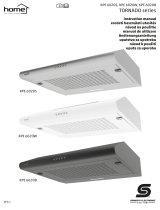 Somogyi Elektronic KPE 6020S Manualul proprietarului
Somogyi Elektronic KPE 6020S Manualul proprietarului
-
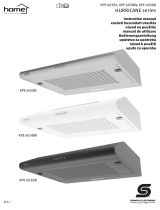 Somogyi Elektronic KPE 6038W Manualul proprietarului
Somogyi Elektronic KPE 6038W Manualul proprietarului
-
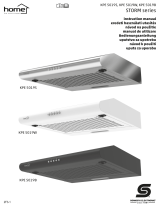 Somogyi Elektronic KPE 5019W Manualul proprietarului
Somogyi Elektronic KPE 5019W Manualul proprietarului
-
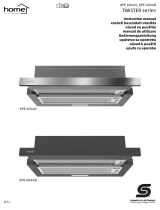 Somogyi Elektronic KPE 6044S Manualul proprietarului
Somogyi Elektronic KPE 6044S Manualul proprietarului
-
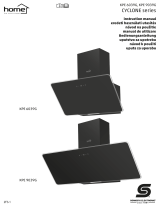 Somogyi Elektronic KPE 6039G Manualul proprietarului
Somogyi Elektronic KPE 6039G Manualul proprietarului
-
Electrolux EFC950X/S Manual de utilizare
























































































